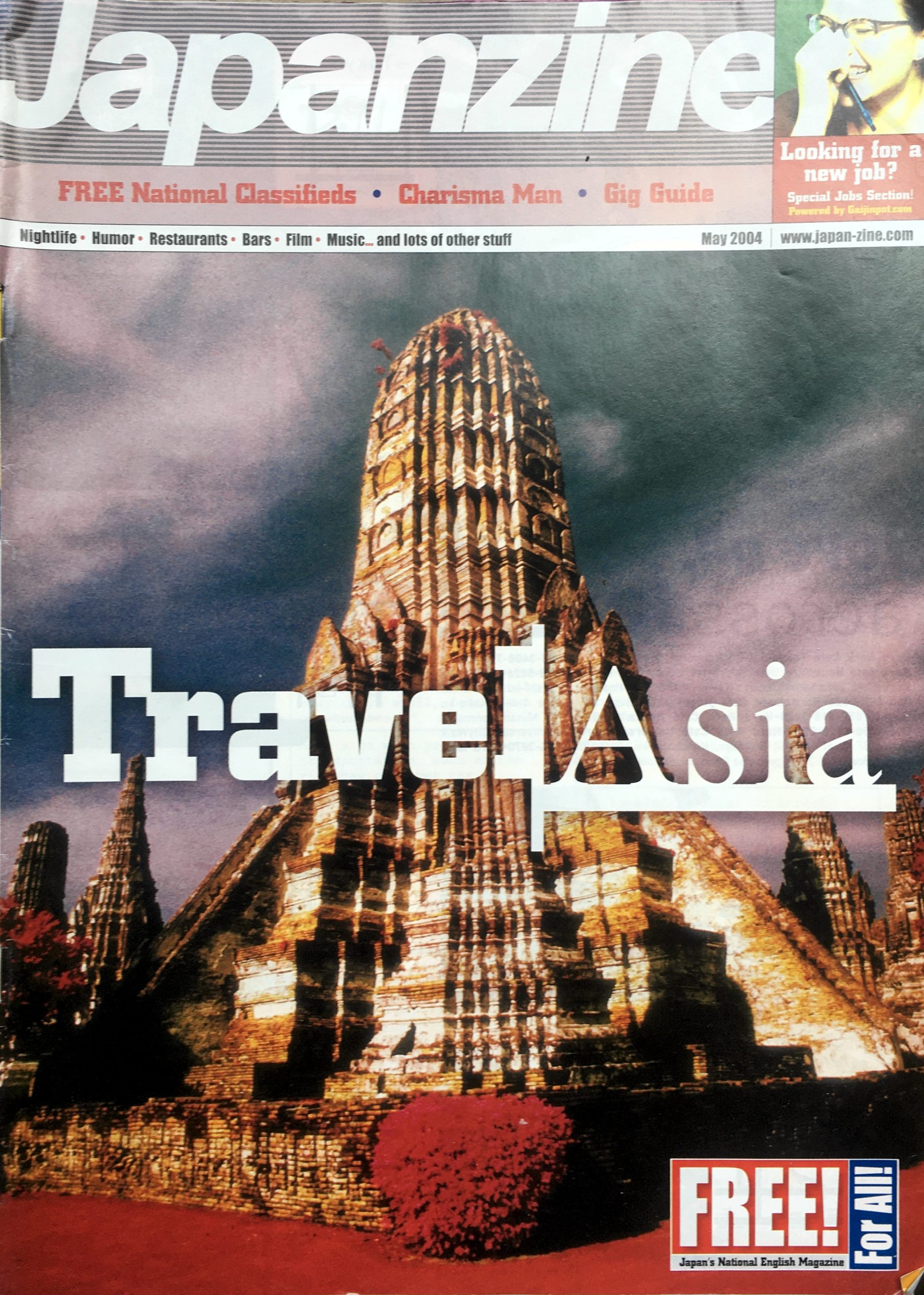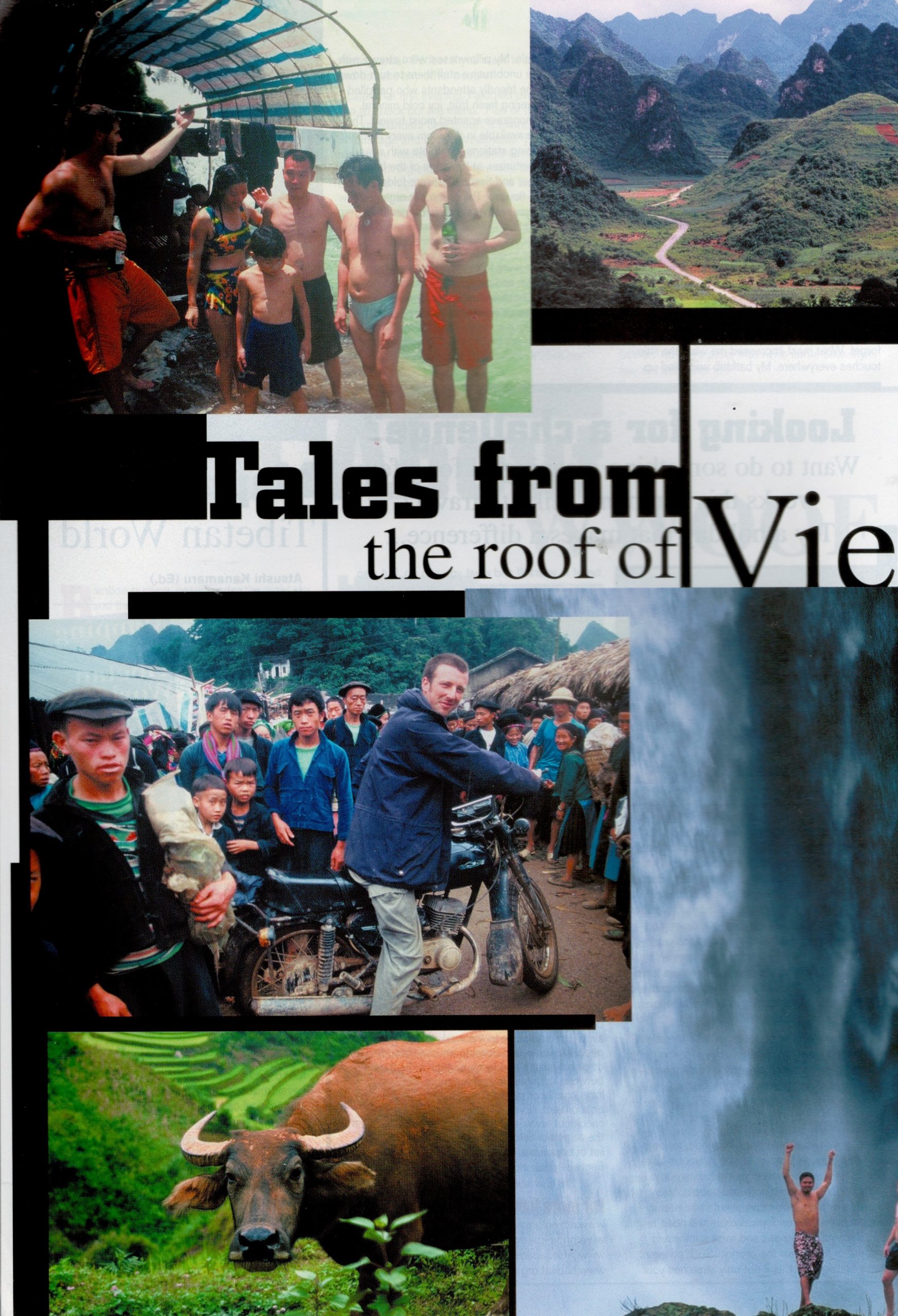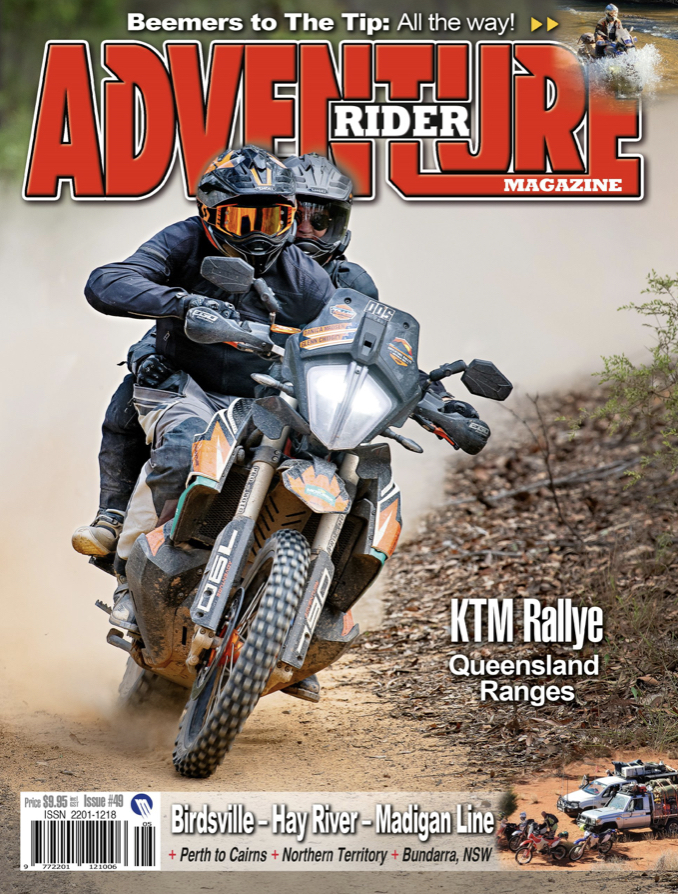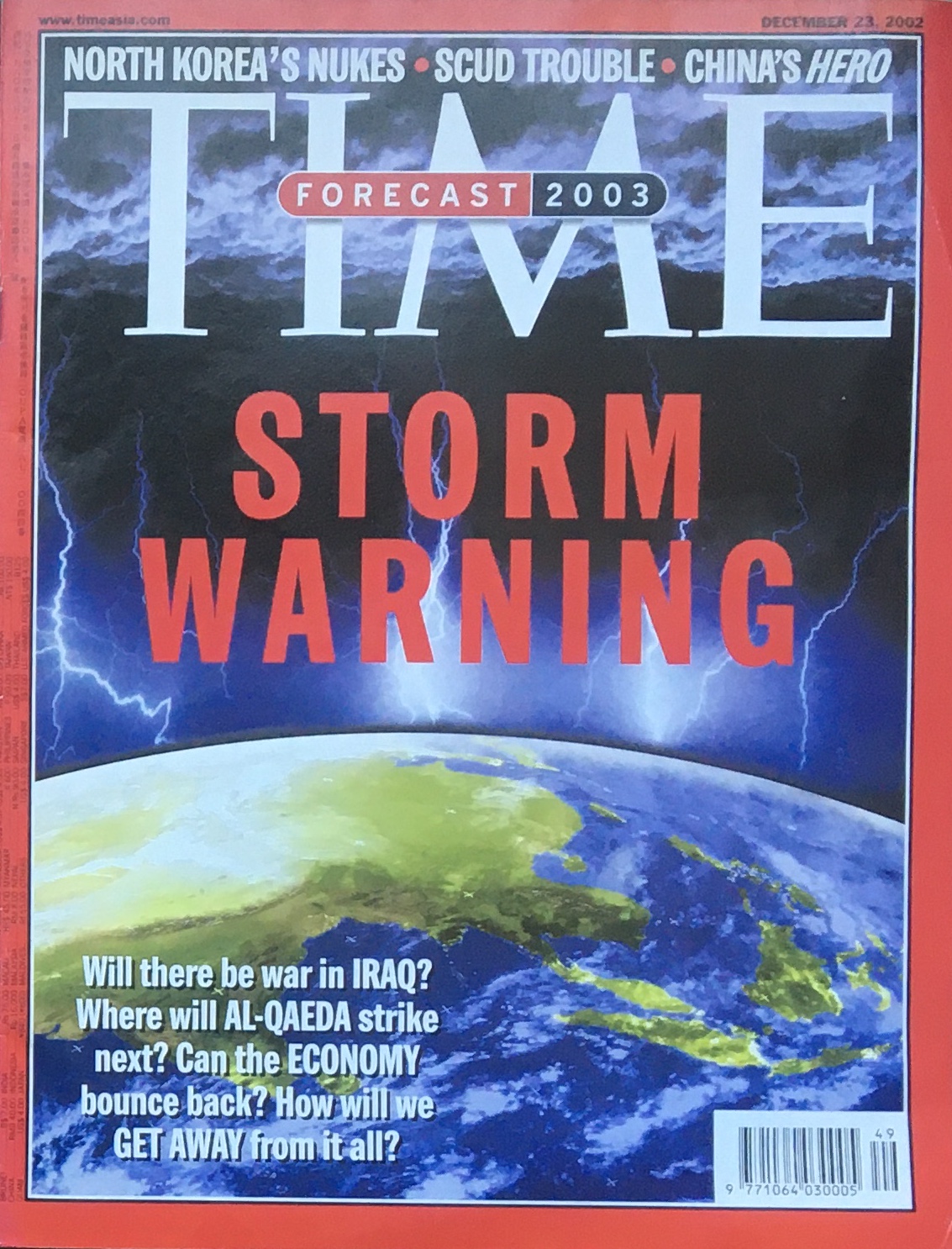Japanzene Magazine
Tales From the Roof of Vietnam
by David Green
Tales From the Roof of Vietnam
When our driving party broke through early morning mist we looked down over sharp, rugged mountains. Hill tribe people tended steep rice terraced slopes, their sing song chatter carried by the wind. Smoke drifted from open cooking fires in traditional stilt house villages and cow bells echoed up from the valley. We stopped our Russian made Minsk motorbikes, stretched our legs over the cliff the road was cut into, and took bearings from our map.
A H’mong hill tribe man wearing a black beret, pants and trousers made from hand woven hemp stopped and said hello.
“Did you make that,” he said, pointing to the map.
“No, we bought it in our home country of Australia,” we said.
Looking at our motorbikes he asked: “How many days did it take to drive here from Australia?”
A Long Bridge
“There’s an ocean in between,” I said.
“There must be a long bridge then,” he said.
“No, we flew in a plane.”
“What’s a plane like,” he asked.
“Just like a bus but you get free booze.”
The Old Buffalo
That night we reflected on our ride to date, which had taken us far from the capital city of Hanoi to strange named places like Yen Bai and Ba Be. The Minsk had proven up to the task of carrying us down a host of difficult roads. The day before we even saw a Minsk carrying a small buffalo and another a medium sized refrigerator. The Vietnamese call it the “con trau cu” (old buffalo).
While the bikes were not pretty, the mountains were spectacular and steep. Great cascades of green rice terraces climbed the mountains and unusual limestone rock formations similar to the hide out of James Bond’s baddie in the “The Man with the Golden Gun” littered valley floors. Everywhere people were happy to see us, and children always waved as we drove by.
The next day in Yen Bai we spotted an abandoned old Soviet MIG fighter plane lying in a park. Our Minsk had an old friend and the pair made a great photo. We asked directions from a local girl selling pigs ears and made our way to the shores of Thac Da lake. Hundreds of islands spread out into the distance over the clear blue water of this 100-km long lake.
The Mining Town of Luc Yen
We hired a long boat and strapped the bikes to the deck. The captain fired up his engine and we spent an hour weaving through the islands before breaking out into the main body of the lake. Under the pink afternoon light we passed fishermen pulling in nets while paddling their feet. Later we examined one such craft to find it was made of bamboo sealed on the outside with cement!
Our boat headed for An Lai village on the opposite bank. It consisted of large stilt houses surrounded by palm trees right on the edge of the lake. Our hosts were from the Dao hill tribe. The women wore blue, white and red embroidered shirts with much silver in their ears and around their necks. The house was raised on large wooden beams allowing the animals to sleep under overnight. Large sliding windows opened out on all sides looking down over the lake.
The next day we followed the edge of the lake past many more traditional villages to the mining town of Luc Yen. This town sits atop the largest deposit of ruby stones in Vietnam, and a large communist era mine has now to cope with thousands of local prospectors who scour the surrounding hills for precious stones. The largest ruby found in Vietnam was found here in 1998 and was the size of a soccer ball.
We drank a mango shake mixed with avocado and walked out into the square where the morning ruby market was in full swing. Hundreds of people moved from table to table where dealers displayed handfuls of rubies of all shapes and sizes. Pre cut rubies, along with other precious stones, were examined by buyers with special eye glasses, keen to spot any flaw in the stone. Other sellers held raw stones, waxy red in appearance, out to passing buyers. I bought a bag of 10 flawed cut rubies and two sapphires for US$18.
Later that we bunked up in a little town called Viet Quang. We sang karaoke until lighting from an enormous rain storm caused a blackout. Little did we know what difficulties that rain was going to cause the next day.
Avalanche
The next day we had problems with avalanches. Steep, rain-swollen slopes above the road were a constant worry, releasing small boulders at random down onto the road. Mudslides were tricky and kneed need streams a little scary to ford. Finally we reached a point where the whole road was destroyed and all we could do was wait.
We backtracked to a sharp bend in the dirt track, joining an assortment of workers, motorbike drivers and Silver Coin Dao women carrying firewood. While sharing fresh French bread and an assortment of cheeses and meats, a chunk of earth and tree gave way just 50 metres behind us and crashed down onto the road. Now we were surrounded!
A road engineer told us the original road was built by the French army, and had witnessed the movement of thousands of colonial troops in the last century. The road led to the old garrison town of Cao Bang, near the Chinese border, which bullied French control of all the northeast of Vietnam up until its abandonment in 1950. Abandoned, gutted manor houses could be seen rotting in the long grass back down the road.
Lunch at the avalanche lasted until an earth remover drove on top of the dirt pile and began to claw apart the soil. After an hour, he waved us on. Each of us eying the still dangerous rock slides sped past one at a time.
Now a Flood
The wet muddy road slowed us down, and only after nightfall did we approach Ba Be lake. Unfortunately the road was completely flooded. Driving for hundreds of metres with the water gushing up over the front handle bars we pushed for dryer land. Then we realised that one of the pannier bags had fallen off in the water. Heading back in the dark, we found it slowly floating away.
Pushing on we entered the primary forest of the national park. The thick forest was tall, dark and quiet. That night we were guests in a traditional Tay hill tribe village on the lake’s edge.
'For Tigers, Just in Case...'
The next morning we loaded our bikes onto a long boat and headed for a cruise up the lake. Ba Be lake has been a national park for thirty years, and its thin finger like shape is flanked on either side by vibrant jungle on steep slopes. Passing local Tay people standing on long dugout log boats, the lake became a river, and then it passed into the side of the mountain. For three hundred meters we moved through an enormous 50-metre high cave before emerging on the other side. Our boat man told us the location of a hill tribe market later that day. We hauled the bikes off the boat and headed back into the mountains.
On the road to the market we passed a Muong man carrying a long flint-lock rifle, a animal hide pouch and a knapsack. Using a long metal rod, he packed white powder, black gun powder, five ball bearings and a paper plug down the rifle barrel. From a small glass vial tied around his neck he removed a firing cap which he placed under the trigger mechanism. Inside the vial was also a rough cut metal plug which looked like a cigarette but. “For tigers. Just in case,” he said.
Dinner at the H'mong Market
We entered the market. There were hundred and hundred of people, shoulder to shoulder, quietly milling about. Some traders had stalls, some spread their wares on plastic mats. Butcher’s tables were stacked high with hacked cuts of buffalo and pig, some of which were still steaming.
An old H’mong woman sold green bottles filled with medicinal plants and herbs. One bottle contained many snakes and something fury. A large group of Dao girls crowded a photography studio. One at a time they took their photo taken with a large poster of a Swiss castle as a backdrop. Many people crowded around a dark stall where an old man in a white coat made brass tooth caps for US$1.5. Next to him was a nasty looking drill powered by a foot pedal. His table was covered in old teeth. My friend was tempted to get a gold cap but decided against when the man said: “I only use the best Russian glue!”
Outside, an old H’mong lady sold amulets which were small red cotton pouches filled with sweet herbs of a complex aroma. I bought two for US10 cents. She showed me how to tie one around my neck. I noticed a monkey skull and dried monkey hand on her table. My guide suggested we drink some rice whisky, called ruou. He knew how to say “cheers!” in five different ethnic languages, and wanted some practice. “It’s a good way to blend in, be normal,” he said.
We joined a low wooden table where a platter of rough cuts including pig trotters, snouts, cheeks, blood sausages and ears stood out amongst bowels (not cups) of ruou, chilli, MSG and salt crystals. Four H’mong brothers that had not seen each other for a year were catching up on old times. They were very generous and kept our bowels filled with the best portions of blood sausage and boiled intestines they had. An old H’mong man joined us. He had two wooden trumpets to sell. The stems were carved from lengths of gnarled bamboo while the mouthpiece and funnel were of beaten brass. The reed was a small tube of rice husk wet with a little ruou. The man produced a beautiful, haunting sound similar to an oboe. I puffed my cheeks and rolled my tongue and managed an unpleasant squeak. Everyone laughed. I bought a trumpet for US$2.
After a rest, we jumped on our motorbikes and headed back into the mountains.
About the Tour
David Green took a ride on a Russian Minsk with a company called Explore Indochina last year and completed an eight-day tour of northern Vietnam. He was accompanied by one friend and a Vietnamese speaking Australian guide.
More Articles
ADV Rider Magazine
by Sean Goldhawk
Rider Magazine
by Perri Capell
TIME Magazine Asia
by Kay Johnson





